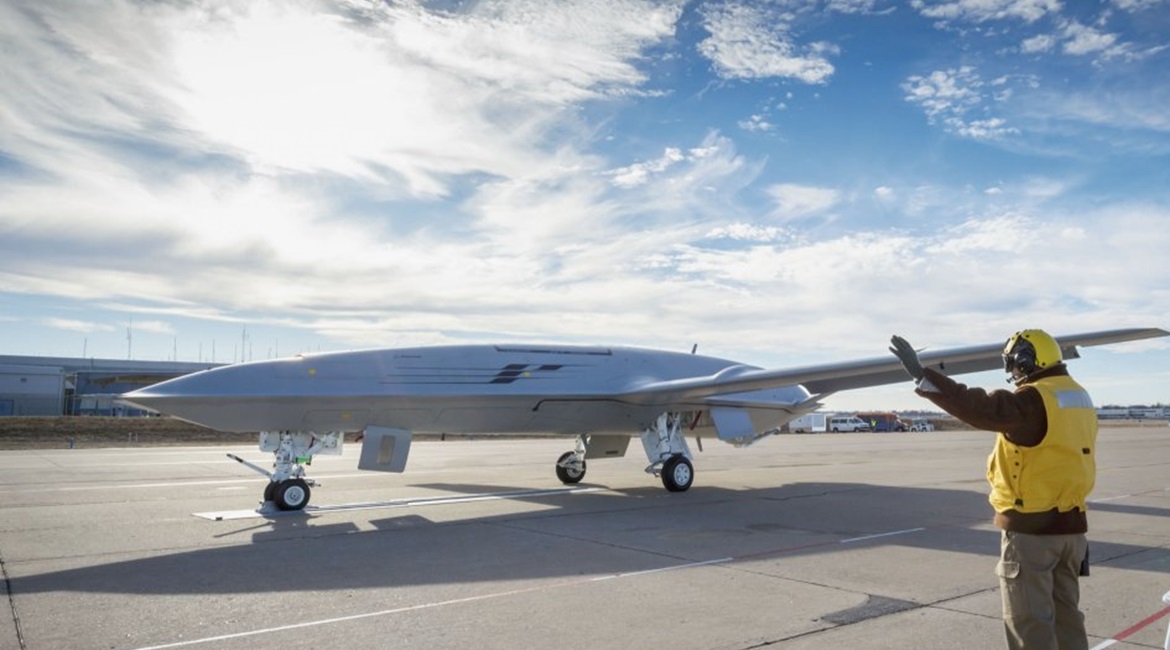
The US Navy (USN) could deliver payload twice as far or remain on station much longer if it fields a future carrier air wing with a different mix of aircraft instead of its current plan, according to a new study.
In its report released 7 February, ‘Regaining the High Ground at Sea’, the Washington-based Center for Strategic and Budgetary Assessments (CSBA) think tank proposes a carrier air wing mix fielded by 2040 that is built around 18 unmanned combat air vehicles (UCAVs), 10 F/A-XX strike fighters, 10 Lockheed Martin F-35C Lightning II Joint Strike Fighters (JSFs), and six UCAV-based airborne electronic attack (AEA) aircraft.

A dedicated carrier-based aerial refuelling tanker such as the MQ-25A could enable USN carrier air wing aircraft to reach combat air patrol stations 1,000 n miles from the carrier and conduct long-range attacks. (USN)
Although the aggregate payload capacity of the proposed carrier air wing is about the same as the USN’s plan, CSBA believes its carrier air wing would improve range, endurance, survivability, and payload capacity compared with today’s carrier air wings. The USN’s planned carrier air wing would centre around 20 F-35Cs and 24 Boeing F/A-18E/F Super Hornets or F/A-XX strike fighters.
The proposed carrier air wing would also incorporate more specialised aircraft to address the growing capability of great power competitors such as China or Russia. The long-range F/A-XX fighter will be better able to counter enemy defensive counterair (DCA) aircraft, and the UCAV will be a more effective platform to support long-endurance combat air patrol (CAP) missions for air defence, anti-submarine warfare (ASW), anti-surface warfare (ASuW), and intelligence, surveillance, target acquisition, and reconnaissance (ISTAR) than the USN’s planned carrier air wing of short-range strike fighters.
Looking to read the full article?
Gain unlimited access to Janes news and more...




